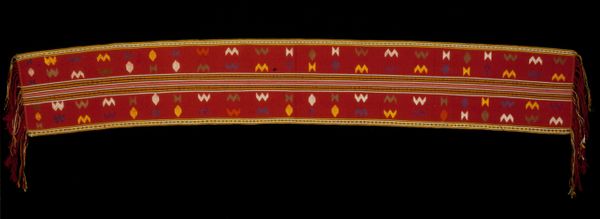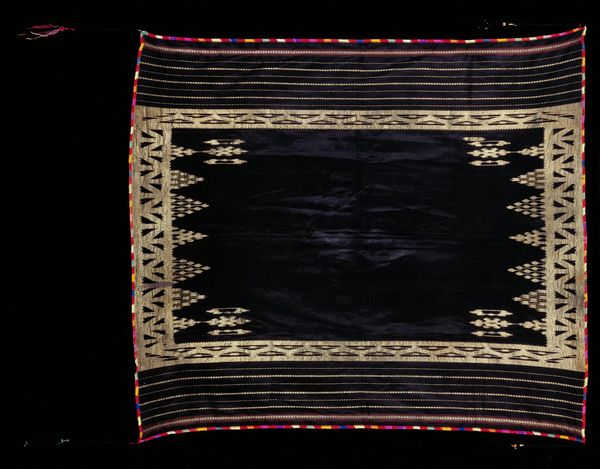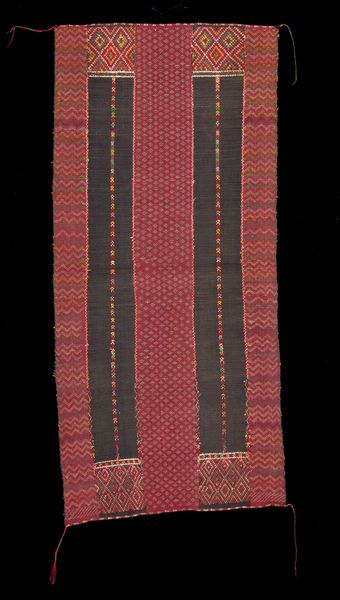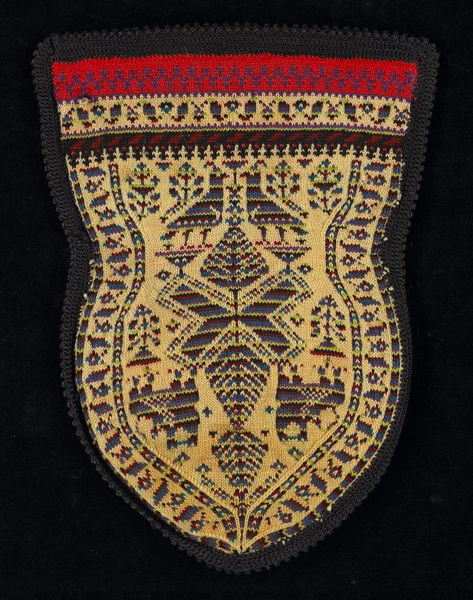
fibre-art, weaving, textile
#
fibre-art
#
weaving
#
textile
#
geometric
#
indigenous-americas
Dimensions: 68 x 31in. (172.7 x 78.7cm)
Copyright: Public Domain
Curator: This intriguing textile artwork is simply titled "Rug." Woven from wool around 1930 by an artist of the Navajo, or Diné, people, it now resides here at the Minneapolis Institute of Art. Editor: Right away, I'm struck by this gorgeous balancing act the artist performs with those graphic elements. The piece feels simultaneously grounded and somehow… flying. It's like a visual spell. Curator: Indeed. The dynamism is largely achieved through its strong geometry. Note the central, almost cruciform design intersected by that ascending, stepped motif on the right. We also have a sort of bilateral symmetry. How might semiotics allow us to interpret these forms? Editor: Well, for me, it's intuitive. That central form feels very much like an ancestral figure, standing with open arms. The ladder to the side calls to mind reaching for something greater than oneself. And the various totemic creatures dancing around just amplify the otherworldly vibe. It all just sings with story. Curator: It's a fascinating proposition. And I believe, despite this apparent narrative reading, the true power might be its ingenious employment of abstraction, of how certain Indigenous artisans distilled forms. Editor: I get what you mean, I just don't know that I necessarily *agree*. It transcends formalism into some higher order. This work possesses something vital – a heartbeat that defies easy reduction. It whispers secrets that visual analysis alone simply can't access. Curator: An evocative sentiment, and something perhaps unique to our experience viewing this extraordinary Navajo textile. Editor: Agreed. It makes you want to unearth some long-dormant aspect of yourself, a latent connection to all of our origins.
Comments
No comments
Be the first to comment and join the conversation on the ultimate creative platform.













